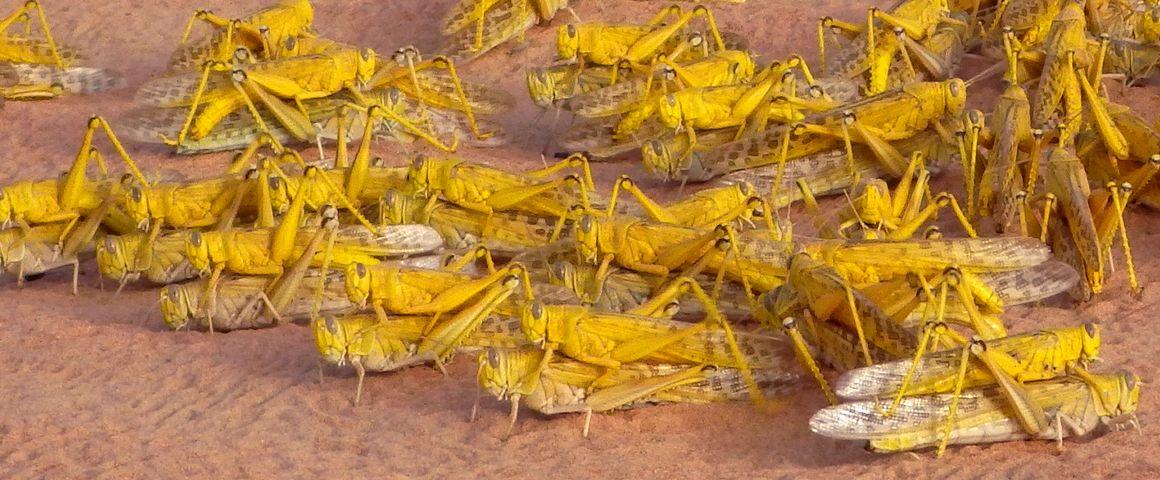Results & impact 10 October 2025
- Home
- Press area
- Press releases
- Discovery reproductive behaviour desert locusts
Desert locusts | New prospects for controlling invasions

Desert locusts mating in the Sahara Desert © Koutaro Maeno, JIRCAS
The article was published in PNAS on 11 October, by the Japan International Research Center for Agricultural Sciences (JIRCAS), in collaboration with the Centre national de lutte antiacridienne in Mauritania (CNLA), CIRAD and the Centre national de lutte antiacridienne in Morocco (CNLAA).
Cyril Piou, a CIRAD ecologist specializing in locust population dynamics and co-author of the study, stresses the progress made: "Until now, we didn't know how desert locusts mate when living in groups in nature. Given that the species poses such huge problems in the event of invasions, it was vital to fill the gap. The field work led by my counterpart at JIRCAS, Koutaro Maeno, was crucial."
The sexes separate at the time of swarming
While desert locusts are generally solitary, they may swarm once they reach a certain population density. Living in groups means certain changes, both physiological and behavioural.
"Gregarious locusts in swarms are brighter colours", Cyril Piou explains. "And when it comes to mating, we recently discovered another change in relation to the solitary phase: females avoid males until they are ready to mate."
Based on field observations in the Sahara Desert, the scientists discovered that gregarious adult locusts form gender-biased groups. In female-biased groups, female locusts are developing ovaries but not mating. Conversely, in male-biased groups, females are ready to lay eggs and mate, to fertilize their eggs.
"Female locusts wait until the day before mating to fly to the males", Cyril Piou adds. "During mating, the males mount the females' backs, which prevents them flying away and being easily attacked by predators. However, in swarms, the males relentlessly press the females to mate: they are constantly harassed if they stay with the male locusts at times when they are not ready to mate."
For the scientists, this separation strategy on the part of female locusts is intended to resolve conflict and meet partners efficiently.
Towards new strategies to prevent damage by locust swarms?
Desert locust swarms are often a disaster for crops. This discovery regarding the species' reproductive behaviour could significantly improve control operations, for instance by targeting female-biased groups carrying eggs.
"Current control strategies make massive use of environmentally harmful broad-spectrum pesticides", Cyril Piou observes. "Our work with our counterparts in Mauritania, Morocco and Japan to understand the desert locust ecology will serve to reduce the use of dangerous chemicals."
Reference
Koutaro Ould Maeno, Cyril Piou, Sidi Ould Ely, Sid’Ahmed Ould Mohamed, Mohamed El Hacen Jaavar, Saïd Ghaout, Mohamed Abdallahi Ould Babah Ebbe. Density-dependent mating behaviors reduce male mating harassment in locusts. 2021. PNAS
About JIRCAS
JIRCAS conducts research to develop improved technologies for the agriculture, forestry, and fishery industries in developing regions. It plays a central role in international contribution and cooperation initiatives in the field of agriculture, forestry, and fishery research in Japan, with the aim of providing solutions to global environmental problems, food insecurity, and extreme poverty.



























